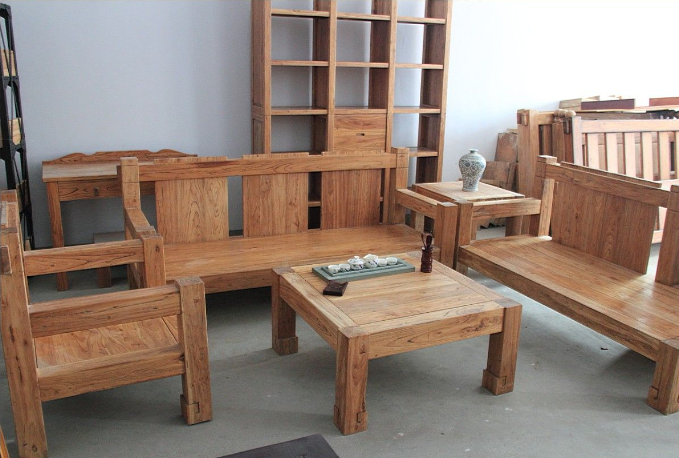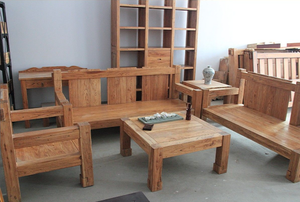
Quality inspection requirements for wooden furniture Inspection and factory verification certification services
Having a cozy home is everyone's dream, and wooden furniture, as an important part of the living environment, its quality directly affects the quality of life and health and safety. To ensure that wooden furniture complies with national and industry standards, strict inspection procedures and quality certifications have become key links in production and procurement. This article will systematically introduce the various quality inspection requirements that wooden furniture needs to pay attention to during the inspection and factory inspection process, helping enterprises improve their quality control system and successfully pass product certification.
I. Requirements for Material Quality Inspection and Certification
The quality of the materials used in wooden furniture directly affects the durability and environmental friendliness of the product, and is the primary review item during the inspection process:
Solid wood furniture: If it is labeled as "Full Rosewood Furniture", all components except for the mirror back panel must be made of rosewood solid wood; if it is labeled as "Rosewood Furniture", the exterior components must be made of rosewood solid wood, while other tree species can be used for the interior and concealed areas.
Double inlay frame furniture: The external tree species should have similar textures, and there should be no significant differences in the same glued component tree species. It is prohibited to mix coniferous and broad-leaved wood materials; the exterior plywood must have the same tree species, and the internal materials are not restricted.
During the inspection and certification process, it is necessary to verify whether the materials used comply with the explicit labels, and to conduct traceability records for the source of the materials.
II. Appearance Quality Inspection Standards
Appearance inspection is the most intuitive part of the inspection process, covering three major aspects: processing, coating, and accessory installation:
Processing quality inspection
The following defects are not allowed to occur during the inspection process:
The edge of the wood panel components is not sealed.
The covering material may have delamination, blistering, separation or glue leakage.
The mortise and tenon joints and the connection areas are loose or have broken.
Carving, wood processing asymmetry or presence of knife marks and sanding marks
The surface treatment did not meet the standard of a highly polished finish, and the inner surface did not meet the standard of a fine polish.
2. Coating Quality Inspection
The key points of coating surface inspection include:
There is a significant color difference in the entire product or the entire set.
The paint film may have wrinkled surface, stickiness, missed application, foggy light, white spots, sagging, powder accumulation, scratches or peeling.
The surface of the covering material has depressions, blemishes and chipped edges.
The uncoated areas are not clean.
3. Inspection of Hardware Installation
Missing parts, loose or exposed nails
The moving parts do not start smoothly.
Installation not secure, chipping around the holes
III. Requirements for Dimensional Accuracy Inspection
The dimensional inspection of wooden furniture is divided into three categories, which are the technical focus points in the inspection and certification process:
Inspection items Standard requirements
Limit deviation Non-folded type ±5mm, folded type ±6mm
Curvature For diagonal length L < 700mm, allowed to be ≤ 1mm
Flatness Within 150mm range ≤ 0.2mm
Neighbor edge perpendicularity For diagonal length L ≥ 1000mm, allowed to be ≤ 3mm; for L < 1000mm, allowed to be ≤ 2mm
Level difference Door and frame ≤ 2mm; drawer and frame ≤ 1mm
Foot bottom unevenness ≤ 2mm
Joint Maximum not more than 2mm
IV. Inspection requirements for wood moisture content
Moisture content is a key factor affecting the stability of furniture. During the inspection and certification process, strict control is required:
Standard requirement: Must conform to the annual average wood equilibrium moisture content W + 1% in the region where the product is used.
Regional differences: 16% - 18% in the south, 12% - 14% in the north
Seasonal adjustment: It needs to be adjusted according to the changes during the rainy season, dry season and winter-spring season.
The contract explicitly states: If the purchaser has any special requirements, they must be clearly indicated in the contract.
V. Inspection of Environmental Performance of Panel Materials
The environmental performance of artificial panel materials is an important aspect in the quality inspection of modern furniture:
Particleboard: Free formaldehyde emission ≤ 50mg/100g
Medium-density fiberboard:
Water content: 4% to 13%
Density deviation: ≤ ±10%
Water absorption thickness expansion rate: ≤ 12%
Formaldehyde emission: ≤ 70mg/100g
VI. Physical and Chemical Performance Testing of Paint Coatings
The paint coating quality inspection covers 8 key indicators and is the core item of the factory inspection certification:
Water resistance: Allows for slight discoloration or obvious marks
Resistant to high temperature and humidity (85℃): Allow for nearly complete ring marks or slight discoloration.
Resistant to high dry heat (70℃): Permissible for nearly complete ring marks or minor variations
Adhesion: Permitted to have intermittent or continuous peeling along the cut line.
Wear resistance (2000 revolutions): Localized slight discoloration is acceptable.
Withstanding temperature fluctuations (from -40℃ to 60℃): No cracks or blistering are allowed.
Impact resistance: Allows for minor cracks, 1 to 2 ring cracks
Glossiness: There are specific percentage requirements based on the type of process.
VII. Requirements for Mechanical Performance Testing
The mechanical performance tests are conducted to verify the durability and safety of the furniture in actual use:
Product Category Inspection Items Content Description
Table Category Strength, Stability, Durability Static load test, impact test, anti-toppling test
Chair and Stool Category Strength, Stability, Durability Repeated loading fatigue test, stability verification
Cabinet Category Strength, Stability, Durability Anti-toppling ability under full load and empty load conditions
Bed Category Strength, Durability Repeated use fatigue strength test
Inspection and Certification Summary
The inspection and factory certification of wooden furniture is a systematic project, involving multiple aspects such as materials, appearance, dimensions, moisture content, environmental protection indicators, paint film performance, and mechanical strength. Enterprises should establish a complete quality management system and strictly implement inspection standards in each production process to ensure that the products pass industry certification and meet market demands.
分享这个商品

Quality inspection requirements for wooden furniture Inspection and fa
A cozy home is everyone's dream, and wooden furniture, as an important part of the living environment, its quality directly affects the quality of life.
